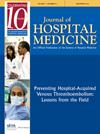Sarcopenia and sarcopenic obesity: Their association with postoperative outcomes in patients with hip fractures
Abstract
Background
Sarcopenia, characterized by age-related loss of muscle mass and function, significantly impacts the quality of life of older adults. This condition is prevalent among elderly patients with hip fractures.
Objective
To investigate the association of sarcopenia and sarcopenic obesity with mortality and length of hospital stay in patients admitted for hip fracture. Additionally, this study aims to investigate possible risk factors associated with higher mortality rates in the same patient groups.
Methods
A retrospective cohort study was conducted involving patients aged 60 and older who underwent hip fracture surgery between February 2019 and April 2023 at a single tertiary care hospital. Sarcopenia was defined using appendicular skeletal muscle mass index (ASMI) and psoas muscle index values derived from preoperative computed tomography scans. Patients were categorized into sarcopenic, sarcopenic obese, and non-sarcopenic groups. Primary outcomes included 1-year mortality, and secondary outcomes included hospital stay duration. Cox regression and binary logistic regression analyses were performed, adjusting for potential confounders including age, sex, and comorbidities.
Results
The study included 311 patients (mean age 79.7 years). After adjustment for confounders, sarcopenia, as defined by ASMI, was associated with a higher 1-year mortality risk (hazard ratio [HR]: 1.80, 95% confidence interval [CI]: 1.04–3.13, p = .034). Sarcopenic obesity further increased mortality risk (HR: 2.68, 95% CI: 1.10–2.57, p = .016). Sarcopenia alone was not significantly associated with prolonged hospital stays after adjustment.
Conclusions
Sarcopenia remained independently associated with mortality in patients with hip fractures after adjustment for various factors. Sarcopenic obesity was associated with a higher risk of mortality than sarcopenia alone. These findings underscore the prognostic significance of sarcopenia in this vulnerable population.




 求助内容:
求助内容: 应助结果提醒方式:
应助结果提醒方式:


